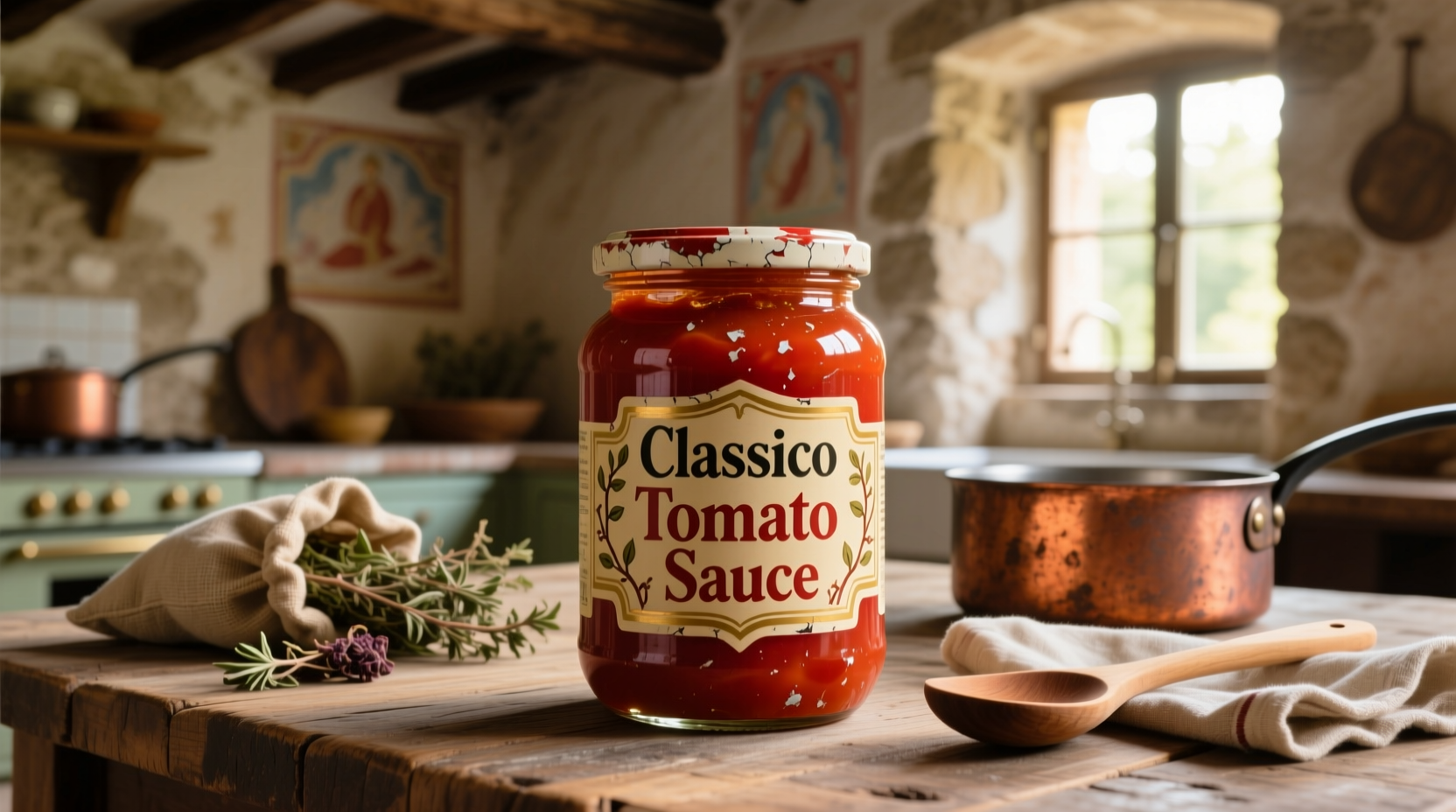What Truly Sets Classico Tomato Sauce Apart
When you reach for a jar of Classico tomato sauce, you're choosing a product developed with attention to traditional Italian sauce-making principles. Unlike many commercial sauces that rely on added sugars and preservatives, Classico maintains a remarkably clean ingredient profile. The brand's commitment to quality begins with selecting vine-ripened tomatoes at peak season, which provides superior flavor depth compared to sauces made from tomato concentrate alone.
Food science research from the USDA Agricultural Research Service confirms that vine-ripened tomatoes contain higher concentrations of lycopene and natural sugars, creating a more balanced flavor profile that doesn't require additional sweeteners. This explains why Classico achieves its characteristic rich taste without artificial enhancements.
Ingredient Analysis: Quality Markers to Recognize
| Ingredient | Classico Traditional | Typical Store Brand | Why It Matters |
|---|---|---|---|
| Tomato Base | Vine-ripened tomatoes | Tomato concentrate | More natural sweetness, less acidic |
| Sweeteners | None added | Sugar, corn syrup | Pure tomato flavor without masking |
| Fat Source | Olive oil | Corn oil | Authentic Mediterranean flavor profile |
| Preservatives | Natural only | Multiple chemical | Cleaner ingredient list, better texture |
Evolution of Commercial Tomato Sauce Production
The journey of tomato sauce from artisanal preparation to shelf-stable convenience has evolved significantly. Traditional Italian sauce making involved slow simmering of fresh tomatoes with minimal additions. The commercialization timeline reveals key developments:
- 1800s: Early commercial tomato sauces contained minimal preservatives, relying on vinegar and salt
- Early 1900s: Introduction of tomato concentrate extended shelf life but reduced flavor complexity
- 1950s-1970s: Addition of sugar and chemical preservatives became standard for mass production
- 1990s: Consumer demand for cleaner labels prompted brands like Classico to return to simpler formulations
- Today: Premium brands focus on vine-ripened tomatoes and traditional preparation methods
This evolution explains why modern premium sauces like Classico can deliver both convenience and quality that approaches homemade results.
Practical Applications: Maximizing Flavor in Your Kitchen
Understanding when and how to use Classico tomato sauce properly transforms ordinary meals into restaurant-quality dishes. Professional chefs consistently recommend these techniques:
Best Culinary Applications
- Pasta dishes: Ideal for quick weeknight meals with spaghetti or penne (simmer 10-15 minutes with fresh basil)
- Pizza base: Spread thinly on dough before adding toppings for authentic Neapolitan-style results
- Braised meats: Creates perfect braising liquid for chicken parmesan or eggplant parmigiana
- Shakshuka: Forms excellent base for this Middle Eastern egg dish with minor seasoning adjustments
Common Mistakes to Avoid
- Using it straight from the jar without simmering (always enhance with fresh herbs)
- Over-reducing which concentrates acidity
- Adding sugar (unnecessary with Classico's natural tomato sweetness)
- Using with delicate seafood (better suited for heartier proteins)

Nutritional Profile and Dietary Considerations
Classico tomato sauce offers notable nutritional advantages compared to many commercial alternatives. According to USDA FoodData Central analysis, a 1/2 cup serving contains:
- 70 calories
- 0g fat (naturally)
- 16g carbohydrates
- 3g fiber (12% daily value)
- 4g protein
- Significant lycopene content (enhanced when cooked with olive oil)
The sauce is naturally gluten-free, vegan, and contains no added sugars—making it suitable for multiple dietary approaches. The U.S. Food and Drug Administration recognizes tomato products as excellent sources of lycopene, an antioxidant associated with numerous health benefits when consumed regularly as part of a balanced diet.
When Classico Works Best (And When to Choose Alternatives)
Understanding the specific culinary scenarios where Classico excels helps maximize your cooking results. This sauce performs exceptionally well in applications requiring:
- Quick weeknight pasta meals (15-20 minute total preparation)
- Dishes where authentic Italian flavor profile is essential
- Situations requiring consistent results without extensive preparation
- Recipes where you want to build flavor quickly without long simmering
Consider alternatives when:
- Preparing delicate seafood dishes (choose a lighter, fresher tomato sauce)
- Creating Mexican or Spanish cuisine (different flavor profiles required)
- Needing extremely low-sodium options (check specific product variants)
- Seeking chunkier texture for certain recipes (Classico offers specific varieties)
Storage and Freshness Tips
Proper storage significantly impacts sauce quality. Follow these professional recommendations:
- Unopened jars maintain quality for 18-24 months in cool, dark pantries
- Once opened, transfer to airtight container and refrigerate (consumed within 5-7 days)
- Freeze in ice cube trays for portioned future use (maintains quality 3-4 months)
- Always check for signs of spoilage: off smell, mold, or bubbling
Food safety research from Centers for Disease Control and Prevention indicates that proper storage of opened tomato products prevents bacterial growth that could cause foodborne illness.











 浙公网安备
33010002000092号
浙公网安备
33010002000092号 浙B2-20120091-4
浙B2-20120091-4